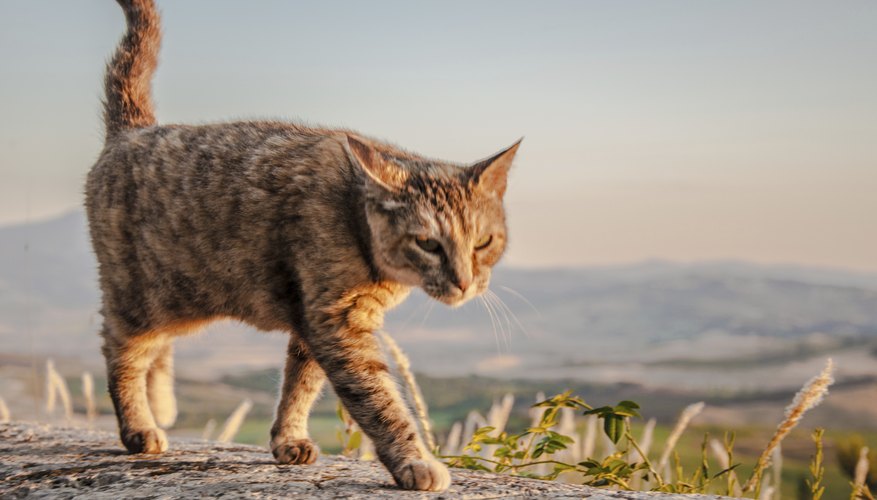Cats are a highly popular pet around the world due to their independent nature and easy-going attitude. However, keeping your cat safe outdoors can take some preparation. Made of strong, small gauge wire woven into a pattern of small octagons, chicken wire is a durable and inexpensive fencing product that is well suited to containing your cat. Adding chicken wire to your existing fence is a simple way to keep your cat safe and still allow her time to explore the great outdoors.
Choose chicken wire that is tall enough to prevent your cat from climbing or jumping out. Most cats can easily jump over objects 60 or 90 cm (2 or 3 feet) high, so use a roll of wire at least 120 cm (48 inches) tall to prevent easy escapes. If you have a cat that is prone to getting loose, you can bend the top 10 cm (4 inches) of your fence back toward the inside of your garden, creating a shape similar to an upside-down J. This will add a lip to the inside of the fence that will make it even more difficult for your cat to climb or jump out of his new enclosure.
- Cats are a highly popular pet around the world due to their independent nature and easy-going attitude.
- If you have a cat that is prone to getting loose, you can bend the top 10 cm (4 inches) of your fence back toward the inside of your garden, creating a shape similar to an upside-down J.
- This will add a lip to the inside of the fence that will make it even more difficult for your cat to climb or jump out of his new enclosure.
Unroll your chicken wire along the ground next to your existing fence. Laying the wire out flat will help it relax and mould better to your fence and will allow you to make sure you have enough wire to cover your entire fence line.
Hold the chicken wire flat against your fence. Cut a piece of baling wire and pass it through one of the holes in your chicken wire, wrapping it around the top of your fence post and tightening it with your pliers. Twist it two or three full turns to be sure it will not come loose. Secure the fencing to the bottom of your post with another piece of wire, making sure to keep it tight.
- Unroll your chicken wire along the ground next to your existing fence.
- Cut a piece of baling wire and pass it through one of the holes in your chicken wire, wrapping it around the top of your fence post and tightening it with your pliers.
Pull firmly on the free end of your roll of chicken wire and stretch it down to the next post, removing any wrinkles or bumps. Wire it to your post at the top and bottom as you did with the first post. Continue the stretching and securing process until you have covered the entire perimeter of your fence.
Walk along your fence, checking for any loose or protruding wires that might injure your cat. Trim any long ends with your wire cutters and fold over any trimmed edges that might be exposed. Cats are inquisitive creatures that can easily injure themselves as they explore their new surroundings.
Turn your cat loose in the garden under supervision and allow her to examine her new enclosure. She will most likely walk the perimeter of the new fence and look for ways to escape, so be sure there are no gaps in the fence she can squeeze out of. She will soon settle down and be able to enjoy her newly constructed, pet-friendly garden.
TIP
Introduce your cat to the new fence in small sessions. Cats are very wary of changes in their environment, and the fencing might frighten him at first. Stay outside with your cat, petting and comforting him if he gets upset.
WARNING
Always wear leather work gloves when working with chicken wire. The cut edges are sharp and can pierce through skin and fabric easily. Do not let your cat outside unattended if you live in a rural area. Large birds, such as hawks, can easily carry off small house pets. Even if your fence is secure, your pet can still find herself in danger.
